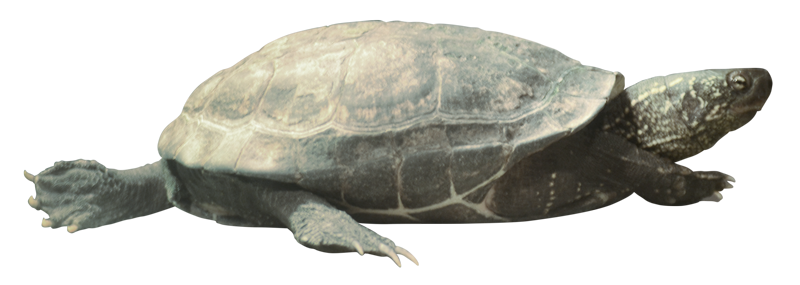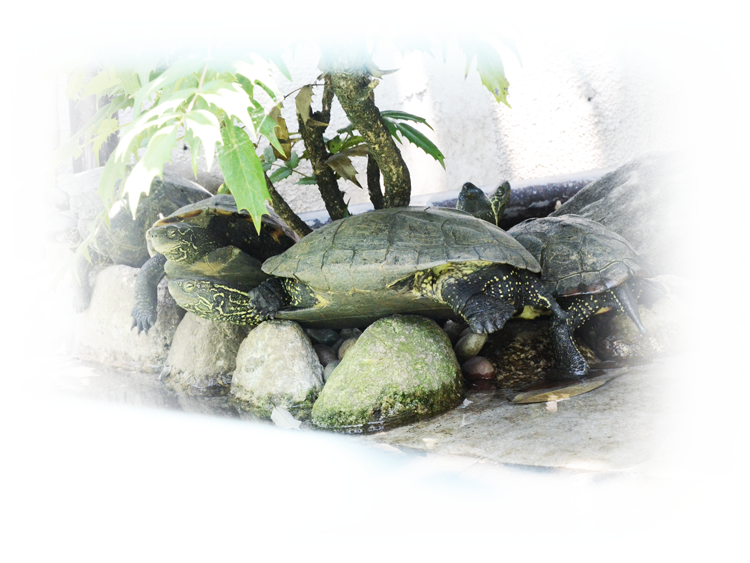
Mauremys reevesii (Gray, 1831)
草亀ではなく臭亀?
Not a grass turtle but a stink turtle?
中国、朝鮮半島など東アジアの流れの緩やかな河川、湖、池沼、湿原に生息します。最大甲長は30cmです。種小名のreevesiiは中国と関わりの深いイギリスの博物学者ジョン・リーブスにちなんで名付けられました。
旧和名は「ヤマガメ」でしたが、「クサガメ」と呼ばれるようになったのは草色の亀だからではありません。戦後に捕まえられると臭腺(しゅうせん)から臭いニオイを放つことが論文で発表されてから、「臭いカメ」という意味で「クサガメ」と呼ばれる様になってしまいました。
日本にも数多く生息しますが、元々日本の固有種ではなく、朝鮮半島から人為的に移入されて繁殖したと考えられています。日本の固有種「ニホンイシガメ」との交雑種「ウンキュウ」もペットとして流通しています。
It lives in slow-flowing rivers, lakes, ponds, and wetlands in East Asia. Its maximum carapace length can reach 30cm. The specific name reevesii is named after John Reeves, a British naturalist with close ties to China.
Its former Japanese name was “yamagame,” but it later became known as “kusagame.” The Japanese pronunciation of “kusa” has two meanings: one is “grass” and the other is “smelly.” Because they are green, it is mistakenly assumed that the name comes from “kusagame,” but this is not actually the case. After World War II, a paper was published stating that when captured, they emit a foul odor from their scent glands, and the name came to be “kusagame.”rtle.”
While many live in Japan, they are not originally native to the country and are thought to have been artificially introduced from the Korean Peninsula and bred there. A hybrid species called the “unkyuu,” a cross between the Japanese pond turtle and the endemic Japanese species, the Japanese pond turtle, is also sold as a pet.

参考文献
国立環境研究所 | 侵入生物データベース | クサガメ 2024年9月8日閲覧
えどがわ環境財団 | 自然動物園ぶろぐ | なんで?クサガメ?? | (2018年07月11日) 2024年9月8日閲覧
エコ〜るど京大web | 【京大!バイオスクープ file 26】10月の爬虫類 クサガメ(前編) | (2023年10月16日) 2024年9月8日閲覧
魚津水族館 | 新着生物 | 富山県内の河川で見つかったウンキュウたち | (2023年2月28日) 2024年9月8日閲覧
東海大学生物学部生物学科 鈴木大 ホームページ|クサガメは外来種? 2024年9月8日閲覧